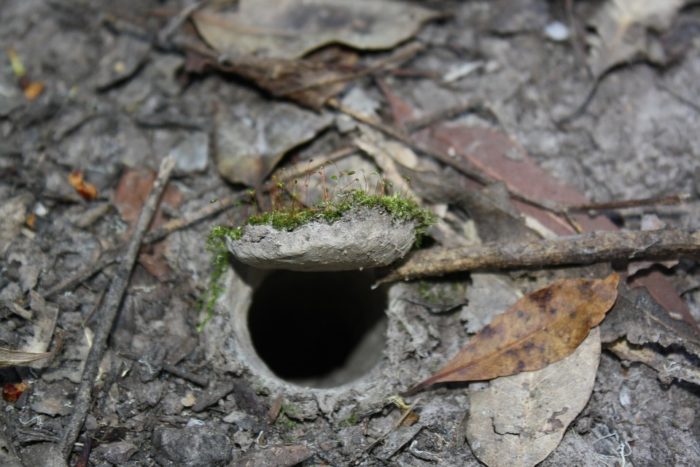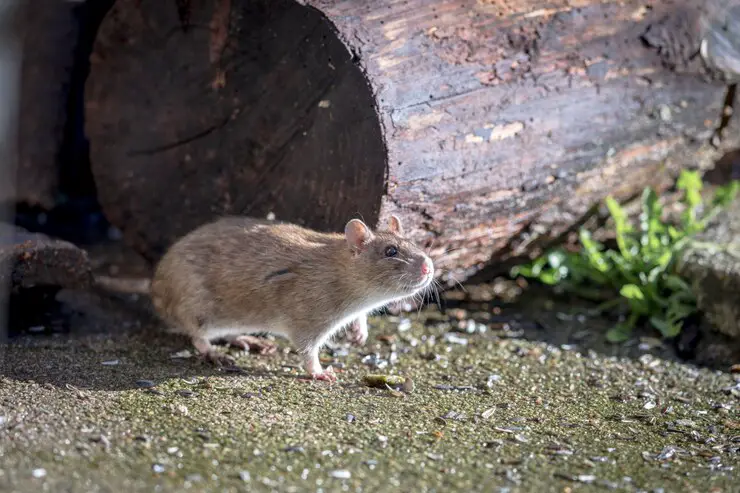Have you been wondering if rats can dig holes and tunnels? They do!
Are you unsure how to identify rat holes and burrows from other holes? We are here to help you!
This article will give you details on identifying rat holes and tunnels and tips to get rid of them.
Important Note: If you're tired of pests and want a reliable solution, then you should definitely consider seeking help from a professional pest control company. DIY solutions can be effective, but if you're dealing with a significant pest infestation, you don't want to rely solely on DIY methods. Pest control companies typically don't charge huge fees. You can fill out this form to receive free quotes from the top local pest control companies, and compare the quotes and see for yourself. Then, finally, your pest problems will be eliminated for good.
So if you have so many fears, you can put them away without worrying!
Just keep calm and read till the end!
Do Rats Live Underground?
Yes! Rats live underground, and they have a mini-society out there! Rats from a vast network of underground tunnels that are interconnected with one another form burrows.
This network keeps growing as the population of rats keeps increasing. And this can cause so many problems.
Rat burrows usually have only one opening, which they use as entry and exit points. This opening leads down to the main chamber where the food they have gathered is usually stored.
Some burrows have two openings, making it easy for the rats to escape.
Interestingly, rats seem to have battles too! Several rats can sometimes live in the same burrows and be of different families too!
Now that can create conflicts, but rats have a way to sort this out.
Out of these battles, two types can exist – The dominant one and the subordinate one. Rats are nocturnal rodents and prefer to go around at night.
The subordinate rat is active and eats when the dominant rat is inactive during the daytime. This explains the reason why you see rats during the day.
So apparently, it’s not just the humans who fight for the land!

Do Rats Dig Holes And Tunnels?
Yes! Rats can dig both holes and tunnels!
Rats have strong teeth and dexterous paws, which help them dig holes and tunnels in the ground.
With their strong teeth, they can chew through materials such as wood, plastic, and even concrete to create holes for entry points that did not exist previously! Astonishing, right?
Rat holes are commonly seen in the gardens, where they chew through food sources like vegetables and fruits.
Rat burrows are found in gardens because the bird and squirrel feed attract rats.
Also, your garden is a hub of food resources, and rats come mainly to gather food for their survival.
Rats can dig intricate tunnels and create a whole network of tunnels called burrows. They use their strong limbs to search for their way inside.
Why Do Rats Dig Holes And Tunnels?
For shelter, food storage, and nesting!
Rats need a place to house themselves. They are nocturnal, and that’s why they mostly prefer living underground.
Rats use the tunnels to store food and use the holes as entry and exit points to their houses.
Rats are clever and create a network of their own to nest, reproduce and thrive. They gather food and store it for future use.
Tunnels and burrows are safe spots for them as they are unlikely to be accessed by other predators.
What Do Rats Holes Look Like?
The first sign of a rat hole is the size of its entrance. A rat hole’s entrance would roughly be 2-4 inches in diameter.
It would also look smooth and compacted with fresh dirt outside of the entrance in a fan shape. This is created when the rats excavate dirt from the holes.
The burrows of rats are not too deep. The depth of a rat burrow is mostly not more than 3 feet long and 18 inches deep. This is because of the limited ability of rats to dig deeper.
Burrows usually have a living or nesting area made of soft debris like grass, leaves, pieces of cloth, and insulation.

How To Identify And Inspect Rat Holes?
Rats are not the only creatures that dig holes and burrow. So if you see any holes or tunnels near your house, it is not a sure sign of a rat hole.
But rat holes have some distinct features that make it relatively easy to identify them. These are some features you might need to look for:
The entrance to a rat hole is usually 2-4 inches in diameter. It is smooth and well packed with a fan-shaped pattern of fresh dirt on the outside.
Look for burrows in areas where rats would love to chew, such as:
- Overgrown vegetation, shrubs, and trees.
- Deck and paving edges
- Grassy banks
- Drain covers
- Compost piles and wooden piles
- Rotting tiles, bricks, and wood.
- Along with structural foundations
Why Rat Holes And Burrows Are Dangerous?
- Ignoring rat holes can let other rodents into the house. Even if you have eliminated the rats from the tunnels, the pheromones left behind can attract other rodents like birds, raccoons, and squirrels.
- Holes and tunnels could expose the wiring and plumbing of your house, making them prone to leakages, fires, and other dangerous phenomena.
- Rats can make your surroundings unhygienic, causing contamination and spreading diseases.
Getting Rid Of Rat Holes And Burrows
- Remove any food and water resources that attract rodents.
- Seal garbage cans and trash tins. Store your lawn clippings and compost waste in closed containers.
- Drain stagnant water and fix leaking pipes and faucets.
- Trim trees and bushes to deprive rats of their nesting places.
- Keep your garden well maintained by removing weeds and unwanted shrubs.
- Rotting rat corpses are a serious issue and can cause many diseases. Fill the burrows and holes with dirt and seal them with steel wool or mesh wire. But make sure the burrows are empty before you do this. Otherwise, the rats may take alternative routes to go out, or they may even die out of suffocation which can cause a foul odor in your surroundings.
Final Words
Rat holes and tunnels can be dangerous in many ways.
Now that you know how to identify and eliminate them, plunge into action to make your house and surroundings rat-free and hygienic.
I hope this article has provided information regarding rat holes and tunnels.
Please make sure you also take care of your safety before inspecting rat holes to get rid of them.
Do away with this rat hole problem and have a safe, healthy life!


small mounds are appearing among my climbing means and just underneath them are holes/tunnels about 2 inches across. I flatten the bumps down but every morning more have appeared. Could this be rats? I have seen one or two in my garden and put down poison bait in a tube in times past. Or might it be a mole?
I have a small enclosed garden and the the mounds are less than an inch tall.
Bit of a mystery and what should I do? It is ruining my runner beans.